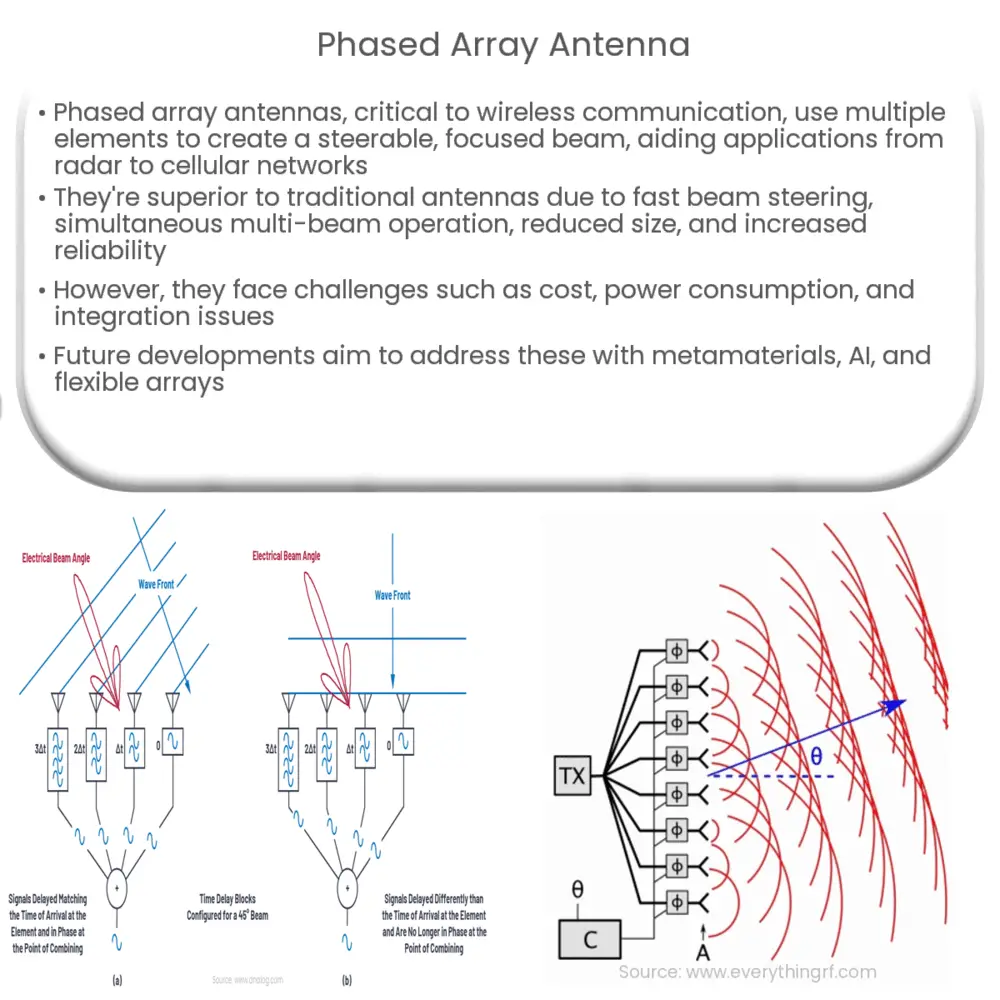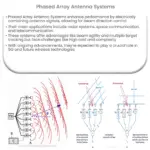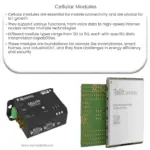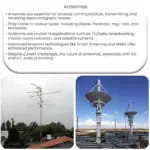Phased array antennas use multiple elements to steer radio waves, enabling rapid scanning and multi-beam communication in various industries.

Phased Array Antennas: Revolutionizing Modern Wireless Communication
Introduction to Phased Array Antennas
Phased array antennas have become a critical component in the ever-evolving landscape of wireless communication. These antennas comprise multiple individual elements, each capable of transmitting or receiving radio waves. By controlling the phase and amplitude of each element, the antenna can generate a highly focused and steerable beam. This adaptability enables a wide range of applications, from radar systems and satellite communications to cellular networks and advanced imaging systems.
How Phased Array Antennas Work
At the heart of phased array antennas is the concept of constructive and destructive interference. When two or more radio waves meet, they can either combine to form a stronger wave (constructive interference) or cancel each other out (destructive interference). By carefully adjusting the phase of each element in a phased array antenna, engineers can create constructive interference in the desired direction, effectively steering the beam. This is achieved through a network of phase shifters and amplifiers that control the timing and strength of the signals emitted by each element.
Phased array antennas can be designed in various configurations, including linear, planar, and conformal arrays. The arrangement of the elements and the choice of phase shifting technology greatly influence the performance characteristics of the antenna, such as its gain, bandwidth, and beamwidth. Some of the most common phase shifting technologies include analog phase shifters, digital phase shifters, and optical beamforming networks.
Advantages of Phased Array Antennas
Phased array antennas offer several key advantages over traditional, mechanically steered antennas:
- Fast beam steering: As phased array antennas electronically control the beam direction, they can steer the beam much faster than mechanical systems, enabling rapid scanning of a wide area or rapid tracking of moving targets.
- Simultaneous multi-beam operation: Phased array antennas can form multiple beams simultaneously, allowing for simultaneous communication with several users or simultaneous tracking of multiple targets.
- Reduced size and weight: By eliminating the need for bulky mechanical structures, phased array antennas are often smaller and lighter, making them suitable for applications where space and weight constraints are critical, such as aircraft or satellites.
- Increased reliability: The absence of moving parts in phased array antennas reduces the risk of mechanical failure and improves overall system reliability.
In the following section, we will discuss the applications of phased array antennas in various domains, their challenges, and the future developments in this field.
Applications of Phased Array Antennas
Phased array antennas have found use in a multitude of applications across different industries:
- Radar Systems: In both military and civilian applications, phased array antennas enable rapid scanning of wide areas and tracking of multiple targets, making them ideal for air traffic control, weather monitoring, and missile defense systems.
- Wireless Communication: Cellular networks, satellite communications, and point-to-point microwave links benefit from the multi-beam capabilities of phased array antennas, which allows for improved signal quality and increased capacity.
- Radio Astronomy: Phased array antennas enable radio telescopes to scan large areas of the sky quickly, leading to more efficient detection and analysis of astronomical phenomena.
- Medical Imaging: In diagnostic tools such as ultrasound and microwave imaging systems, phased array antennas help generate high-resolution images by focusing energy on a specific area of interest.
Challenges and Future Developments
Despite their many advantages, phased array antennas face several challenges that must be addressed to fully realize their potential:
- Cost: The complexity of phased array systems can lead to higher costs, especially for larger arrays with a high number of elements. Research and development efforts are ongoing to find cost-effective materials and manufacturing techniques.
- Power Consumption: The active components in phased array antennas can consume significant power, particularly in large-scale systems. Energy-efficient phase shifters and amplifiers are essential for minimizing power consumption and maximizing system performance.
- Integration: Integrating phased array antennas into existing systems and platforms can be challenging, as they require specialized components and control systems. Seamless integration will be crucial for the widespread adoption of this technology.
Future developments in phased array antenna technology are expected to address these challenges and unlock new possibilities. Some of the areas of research and innovation include:
- Metamaterials: The development of new materials with unique electromagnetic properties could lead to more compact and efficient phased array antennas.
- Artificial Intelligence: AI-based algorithms can optimize the performance of phased array antennas by automatically adjusting their parameters and predicting the optimal beam configuration for a given scenario.
- Flexible and Conformal Arrays: Advances in materials and manufacturing techniques are paving the way for flexible and conformal phased array antennas that can be integrated into curved surfaces or conform to the shape of a host platform, further expanding their potential applications.
In conclusion, phased array antennas have revolutionized modern wireless communication by offering fast beam steering, simultaneous multi-beam operation, and reduced size and weight. As research and development efforts continue to overcome existing challenges, the future of this technology promises even greater advancements in radar systems, wireless communication, radio astronomy, and medical imaging.




